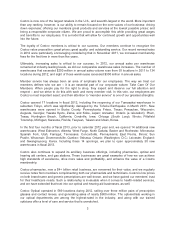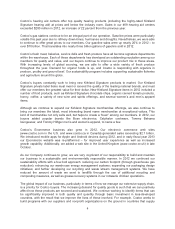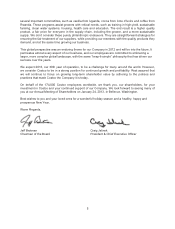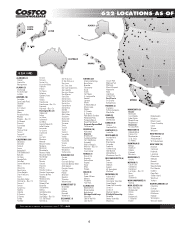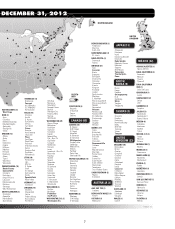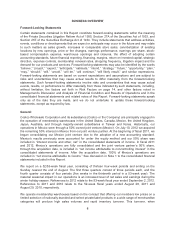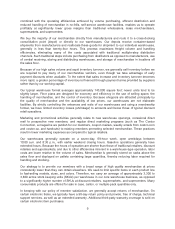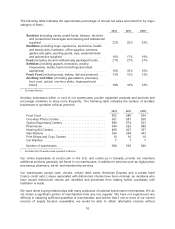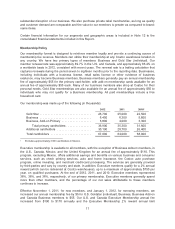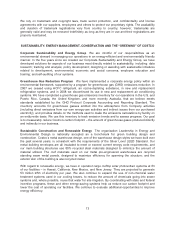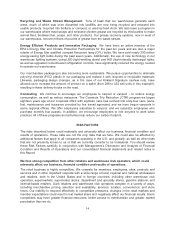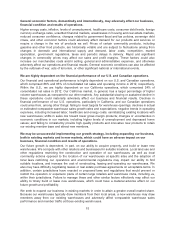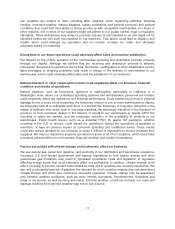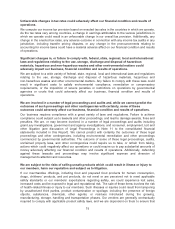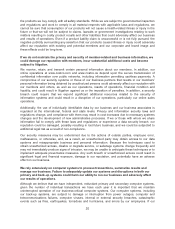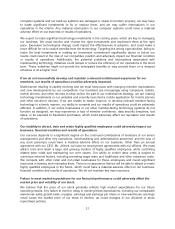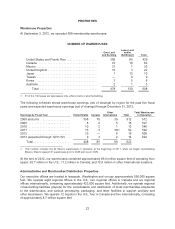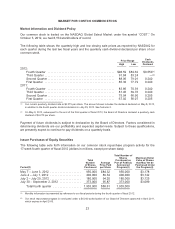Costco 2012 Annual Report Download - page 15
Download and view the complete annual report
Please find page 15 of the 2012 Costco annual report below. You can navigate through the pages in the report by either clicking on the pages listed below, or by using the keyword search tool below to find specific information within the annual report.We rely on trademark and copyright laws, trade secret protection, and confidentiality and license
agreements with our suppliers, employees and others to protect our proprietary rights. The availability
and duration of trademark registrations vary from country to country; however, trademarks are
generally valid and may be renewed indefinitely as long as they are in use and their registrations are
properly maintained.
SUSTAINABILITY: ENERGY MANAGEMENT, CONSERVATION AND THE “GREENING” OF COSTCO
Corporate Sustainability and Energy Group We are mindful of our responsibilities as an
environmental steward in managing our operations in an energy-efficient and environmentally friendly
manner. In the five years since we created our Corporate Sustainability and Energy Group, we have
developed solutions for aspects of our business most directly related to sustainability, including: data
research; tracking and analysis; policy development; designing or assisting with sustainable initiatives
related to development, environmental, economic and social concerns; employee education and
training; and self-auditing of our systems.
Greenhouse Gas Reduction Program We have implemented a corporate energy policy within an
environmental framework, supported by a program for greenhouse gas (GHG) emissions reduction. In
2007 we ceased using HCFC refrigerant, an ozone-depleting substance, in new and replacement
refrigeration systems, and in 2008 we discontinued its use in new and replacement air conditioning
systems. We have completed a greenhouse gas emissions inventory for our operations in the U.S. and
Puerto Rico, Canada, the United Kingdom, and more recently Australia, that we believe meets
standards established by the GHG Protocol Corporate Accounting and Reporting Standard. The
inventory accounts for greenhouse gasses emitted into the atmosphere from Company activities
(including direct emissions from our own energy-use activities and indirect issues from our purchased
electricity), and provides details on the methods used to make the emissions calculations by facility on
an entity-wide basis. We use this inventory to track emission trends and to assess progress. Our goal
is to measurably reduce Costco’s carbon footprint – the amount of greenhouse gases produced directly
and indirectly in our business.
Sustainable Construction and Renewable Energy The organization Leadership in Energy and
Environmental Design is nationally accepted as a benchmark for green building design and
construction. Costco’s metal warehouse design, one of the warehouse design styles we have built over
the past several years, is consistent with the requirements of the Silver Level LEED Standard. Our
metal building envelopes are all insulated to meet or exceed current energy code requirements, and
our main building structures use 80% recycled steel materials designed to minimize the amount of
material utilized. The roof materials used on our metal pre-engineered warehouses are recycled
standing seam metal panels, designed to maximize efficiency for spanning the structure; and the
exterior skin of the building is also recycled metal.
With regard to renewable energy, we have in operation large rooftop solar photovoltaic systems at 63
of our facilities – in Hawaii, California, New Mexico, and New Jersey. They are projected to generate
53 million kWh of electricity per year. We also continue to expand the use of non-chemical water
treatment systems used in our cooling towers, to reduce the amount of chemicals going into sewer
systems and, where possible, reuse that water for site irrigation. By coordinating with state and federal
incentive programs, these and other energy-saving systems help us reduce our carbon footprint and
lower the cost of operating our facilities. We continue to evaluate additional opportunities to improve
energy efficiency.
13


